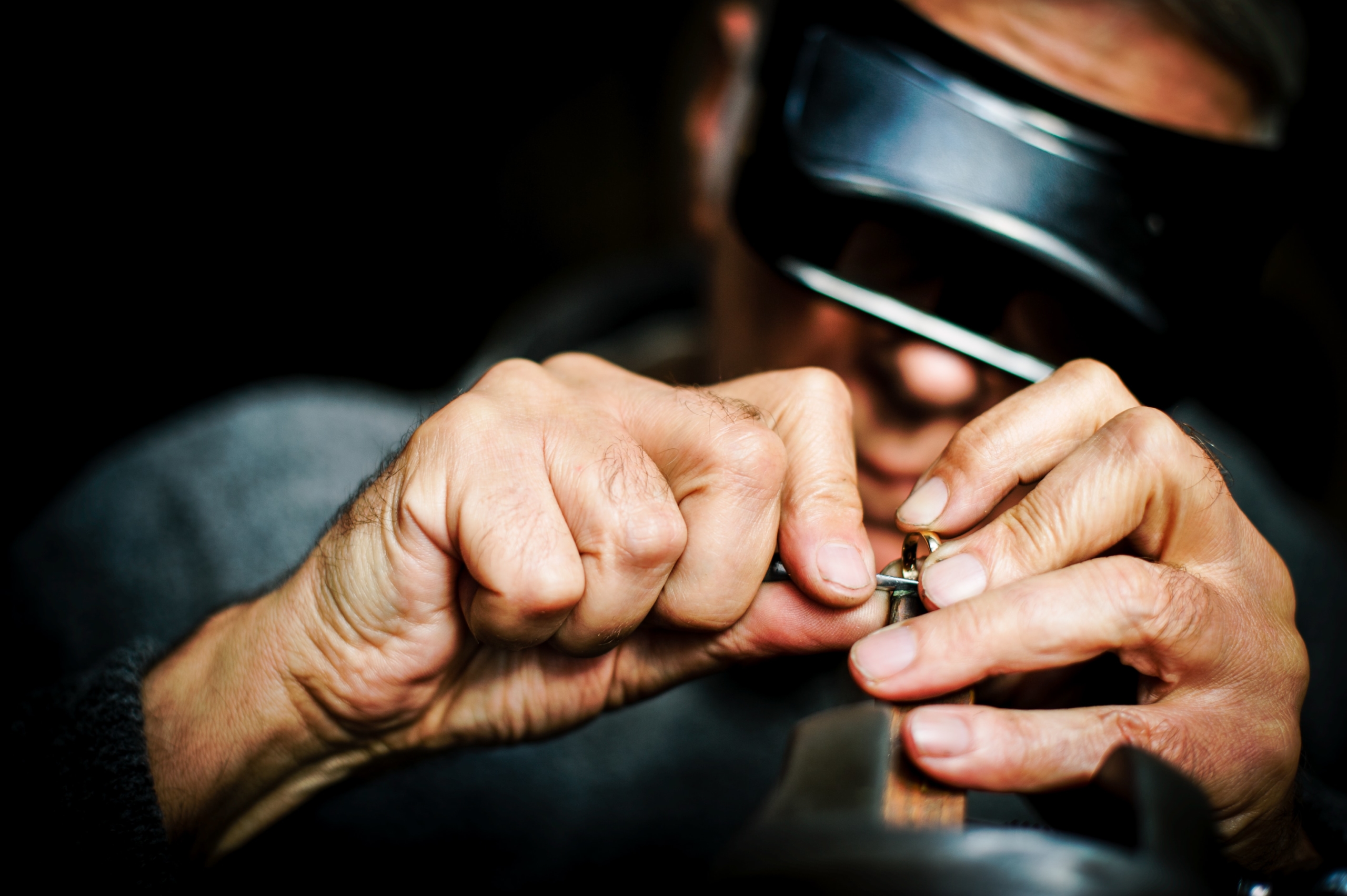Engraving is one of humanity’s oldest art forms, with carvings found as early as 40,000 years ago. The modern term is derived from the French word “engrave” which means to carve or to dig. While engraving has been used for functional purposes such as in the printing industry, for much of its history, engraving has served a decorative purpose.
What is an engraving?
Engraving is the process of writing or creating designs on solid objects. Through technology, almost any type of solid material can be engraved these days, including metal, glass, stone, and precious gems.
Hand engraving
However, for millennia, engraving used to be done by hand on a limited number of objects and relied heavily on the skill of the artisan.
There were two main types of hand engraving: push engraving and chasing. In push engraving, the craftsman “pushed” the design into the solid object with his tool. When chasing, they struck the engraving tool with a hammer, moving it across the material being engraved.
Hand engravings were one of a kind, hard to replicate, and they were time-consuming. They have become increasingly rare as machinery becomes more specialised to take on the task.
Mechanical engraving
With industrialisation came the need for standardised products. This affected every type of artwork, including engravings. Factories had to find a way to reproduce the same etchings on mass-produced items in a cost-effective way and that saved time.
Two types of modern machine engraving methods are the rotary and diamond drag methods. In the rotary method, motor-powered cutters etch the writing or design into the solid object. Rotary machines can be used to cut a variety of materials.
Diamond cutting involves the use of the same machine. Only this time, a diamond engraver is placed on the tip. This method is used to engrave mainly metals.
This process doesn’t even have to be guided by human hands anymore. Designs can be programmed into computers that then operate the cutting tool, resulting in an even cleaner, faster finish.
What can I engrave?
Do you want to make a personal statement, commemorate an event, or let a loved one know how special they are to you? Engraving is one of the best ways to create a unique piece loaded with significance.
The beauty is, you can engrave practically anything.
Want to give an employee a watch or bracelet to mark their service to a company and retirement? Engraving elevates a gift that honours their service to the company and will always have special meaning for them.
Want to immortalise a running joke among friends? Etch details only you and they share onto a pendant or lucky charm. Decades later, the piece will always be there to remind you of that bond.
And of course, engravings on engagement and wedding rings remain one of the most popular uses of the art form. What could be more timeless than an incorruptible expression of love?
Things you should know
As with everything, engraving has its downsides.
Engravings lower the value of whatever the mark is placed on. If this is an expensive piece of jewellery, this is something you might want to consider before you do it.
Getting an engraving done can also weaken the piece depending on the material it’s made of. It may crack or break more easily if exposed to extreme conditions. You’ll have to decide if the potential for damage is worth it in relation to the cost of the object.
Know that if you need to, engravings can also be removed.
Jewellery has been our business for over 30 years. Do you need to personalise a watch or piece of jewellery? Let’s talk. Call us at 0141 946 6333.
